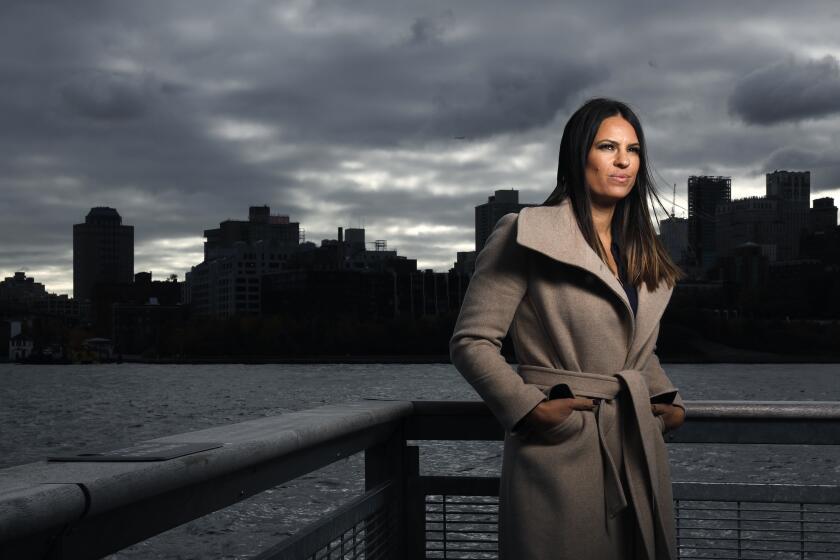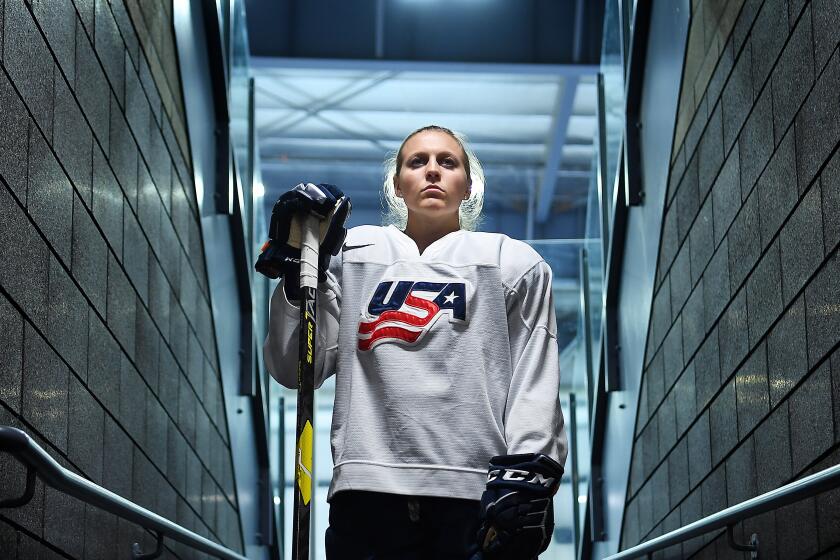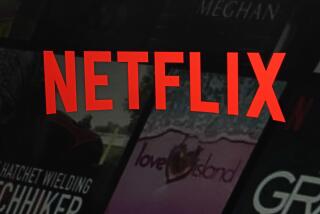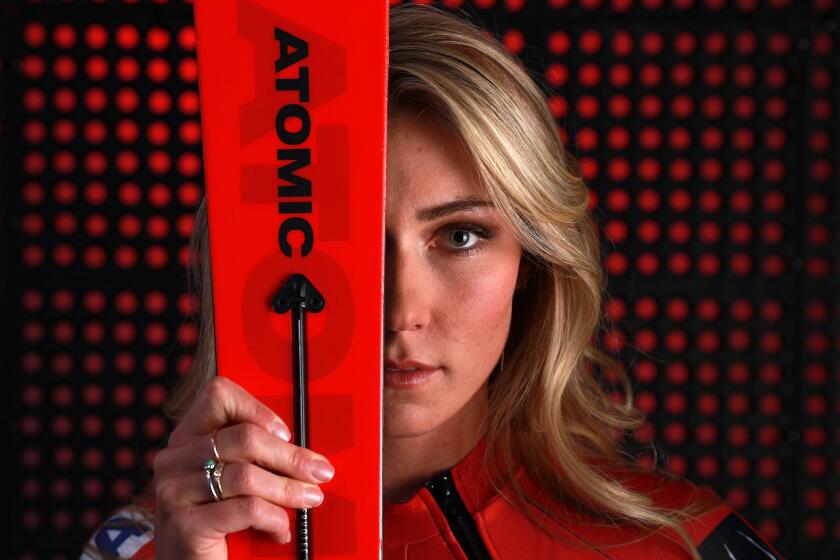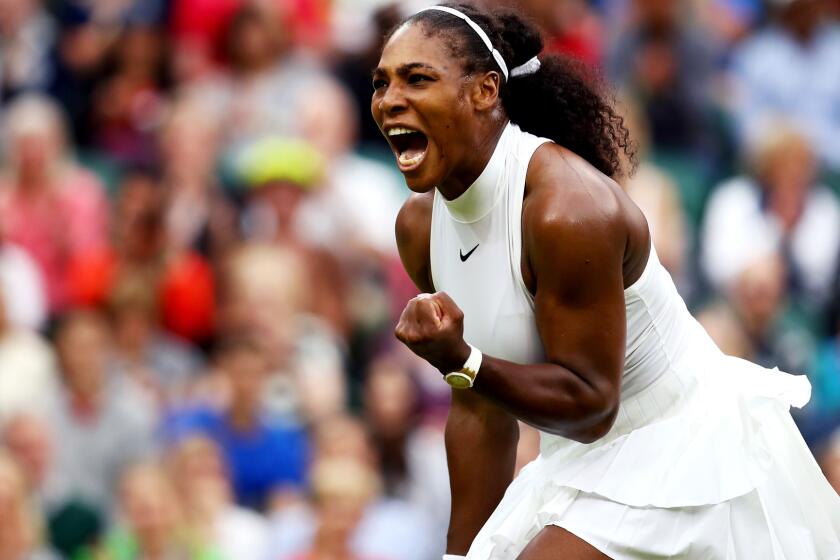Will the streaming revolution give women’s sports the coverage it deserves?
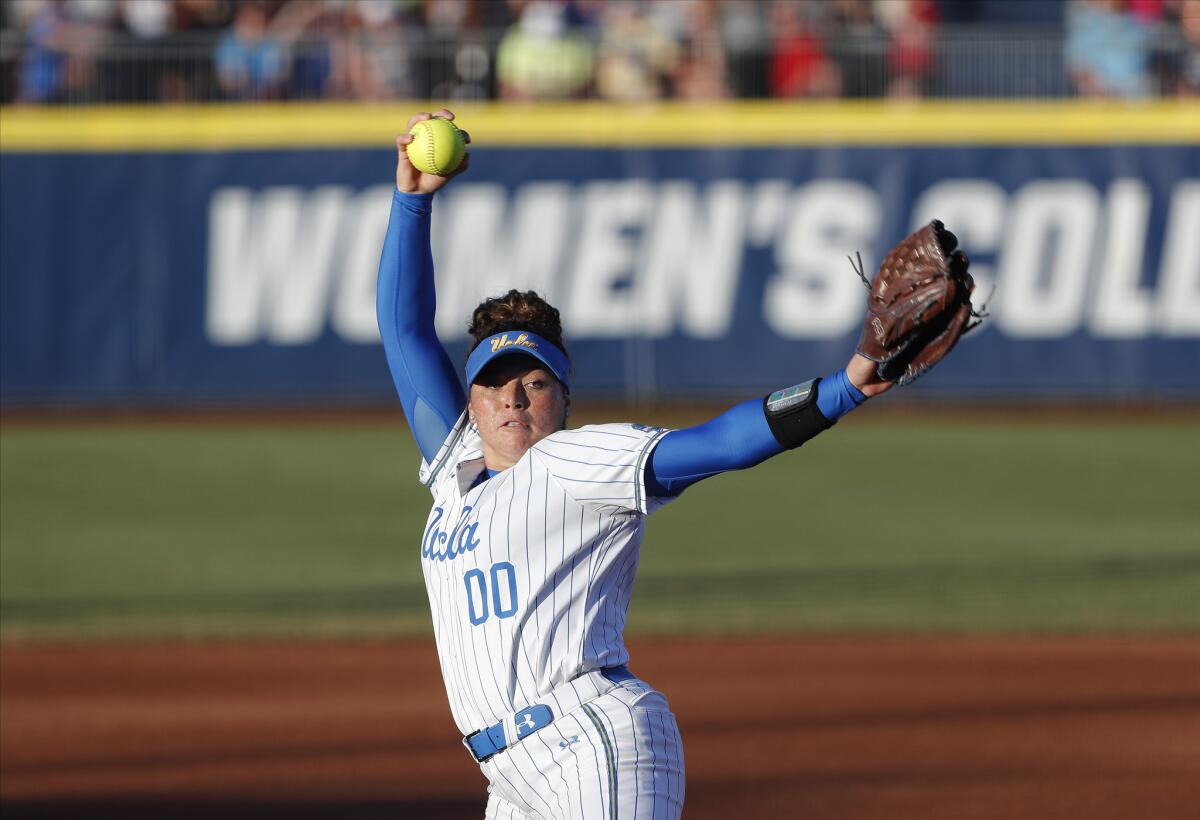
Are you ready for some women’s field hockey?
Don’t expect “Monday Night Football” theme song singer Hank Williams Jr. to wail that question in prime time any time soon.
But the streaming video revolution that is upending the long-entrenched habits of TV viewers is creating more opportunities for women’s sports to get wider exposure.
ESPN’s over-the-top video streaming service ESPN+, which offers thousands of hours of events not offered on the Walt Disney Co.-owned cable service, has offered a platform for many women’s sports that did not previously have a home on TV.
Mendoza, a two-time Olympic medalist in softball and an ESPN baseball analyst, is the first woman to work regularly in the TV booth on coverage of a major U.S. men’s pro league.
The subscription service presented more than 7,000 hours of women’s coverage in the first nine months of 2019. That includes a full slate of women’s collegiate field hockey games on Saturday afternoon. ESPN has also added more hours of women’s events on its new collegiate sports channel ACC Network — with 62 field hockey, women’s soccer and volleyball games scheduled for its first year. The ACC Network also has a streaming video platform that offers games not available on television.
Carol Stiff, vice president of women’s sports programming for ESPN, said in a recent interview that streaming technology and its potential to distribute an unlimited amount of programming comes at a time when several generations of female athletes have grown up with the Title IX law requiring equal access to any program or activity that receives federal financial assistance, including sports.

“You’ve seen more exposure with the use of streaming mechanisms,” Stiff said. “And with the opportunity for women to participate coming up on 50 years, the talent and skill level in major sports has improved immensely.”
Streaming video platforms have the potential to level the playing field for coverage of women’s sports, which had long been given scant attention from major media outlets.
The Women’s Sports Foundation cites a Purdue University study that tracked TV sports coverage on three Los Angeles network TV affiliate stations and ESPN from 1989 to 2014. The findings showed only 3.2% of sports TV highlight shows were devoted to women’s competition in 2014 — a percentage that actually declined over 25 years even as participation rates among female athletes rose.
Game Changers: Trailblazers
The Times’ profile series of women who are pioneers in sports.
But viewer choices are no longer constrained by the limitations of traditional TV sports coverage. According to Nielsen, 70% of all U.S. households now subscribe to a video-on-demand streaming service. As streaming businesses proliferate, the appetite for every programming niche can be satisfied.
“There is an increasing number of sports apps and they are ravenous for content,” said Lee Berke, president of the consulting firm LHB Sports Media & Entertainment. “That’s only going to help boost coverage of women’s sports.”
BR Live, the sports streaming service owned by WarnerMedia, recently carried the inaugural season of the Women’s FIH Pro League, a field hockey championship for women’s national teams from around the world. NBC — which already accounts for 23% of all women’s sports programming on television due largely to its Olympic Games coverage — is offering women’s figure skating and other events on an on-demand basis through its NBC Sports Gold streaming service.
FloSports, an Austin, Texas-based streaming service with several hundred thousand subscribers, recently picked up the exclusive digital rights to the Premier Girls Fastpitch softball league earlier this year. The company also recently announced a pact with the Eastern College Athletic Conference — which includes 220 schools from Maine to South Carolina — to cover 120 of its postseason championship events, including women’s field hockey, volleyball, soccer, basketball and lacrosse.
(Women’s softball has been growing as a TV event, with UCLA’s victory in the Women’s College World Series averaging 1.57 million viewers on ESPN last year, according to Nielsen, a 13% increase over 2018.)
Nearly 50 years after Congress passed Title IX, female athletes are still scrambling for a fair shot in the male-dominated world of sport. In hockey, top Americans and Canadians train with their national teams part-time; the rest of the season, they have only a small pro league that offers twice-a-week practices, weekend games and thin salaries.
While the growth of streaming is promising for the future of women’s sports, traditional television is still currently the best vehicle for bringing events to mass audiences. Stiff said getting sponsorship for her women’s properties that are comparable to men’s competitions remains a challenge that “keeps me up at night.” But streaming might help on that front as well.
As viewers of streaming platforms watch dramas and sitcoms on their own schedules, the ability to reach those audiences with timely ad messages is diminishing. Sports are still best enjoyed live on a big-screen TV, making them more valuable to advertisers who want audiences to see their commercials when they air, and increased demand for them has some marketers taking a closer look at women’s events.
Adam Schwartz, a senior vice president at the ad-buying firm Horizon Media in New York, said he is getting more inquiries from clients who want to be involved with women’s sports properties, especially after U.S. national soccer team toppled the Netherlands to win the Women’s World Cup on July 7 — a match watched by an average of 15.6 million viewers on Fox Sports and Telemundo.
“We’re getting asked a lot more about sponsorship opportunities than we were a year ago,” Schwartz said. “Live viewing is live viewing. That in itself is something that is going to make advertisers happy.”
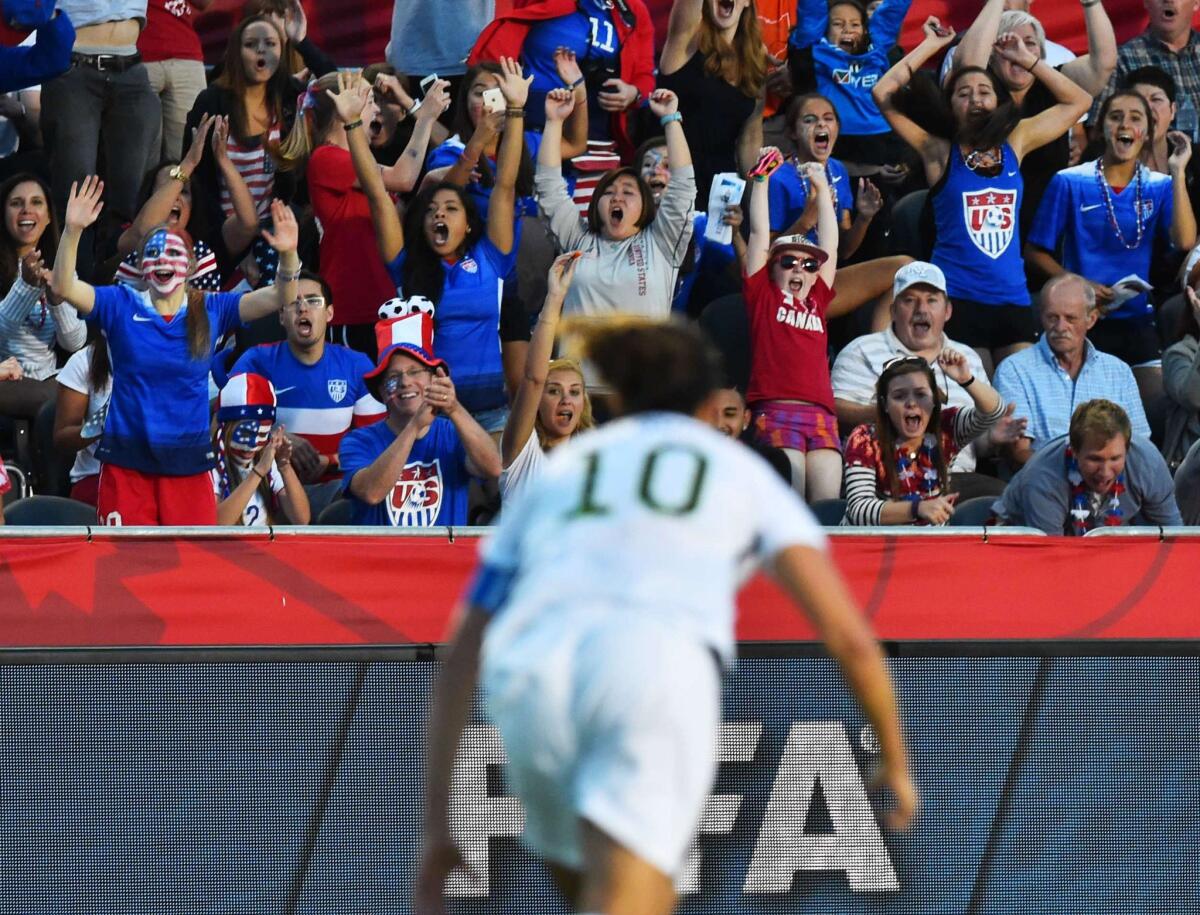
Men are the traditional target for advertisers who buy time on sports programming. For the most part that does not change for women’s events. “We have more men watching women’s sports than women,” Stiff said. “If they have daughters, or granddaughters or nieces that play the sport, that’s very helpful.”
Big sports personalities are key to driving up TV ratings. The global following of a mega-star such as Serena Williams —a pop culture icon as well as a tennis champion — is what has helped keep ratings for the women’s competition in the U.S. Open tennis tournament higher than the men’s matches in recent years. Last year’s final between Williams and Bianca Andreescu had an average audience of 3.72 million viewers compared to 2.75 million for Rafael Nadal’s victory over Daniil Medvedev, according to data from Nielsen.
The U.S. women’s soccer team generated two World Cup stars with the politically outspoken Megan Rapinoe and Alex Morgan, whose celebratory tea-sipping during the win over England in the semifinals made her a viral video sensation. The large audience for their victorious run prompted ESPN to pick up the rights to televise 14 matches of the National Women’s Soccer League, the professional league in which Rapinoe and Morgan also play.
Game Changers: Next Gen
The Times’ profile series of women in sports who continue the fight for equality.
Stiff said breakout athletes have helped her make a case to get better TV time periods for events. Fifteen years ago, the emergence of Diana Taurasi, leading Connecticut to a championship, helped get NCAA women’s basketball better time periods on ESPN.
“People in the ESPN newsroom talking were comparing her to Larry Bird,” Stiff said. “And so you could feel that the breakthrough had come. … When that happened I remember going in to talk to our chiefs there in programming, and I said, ‘Hey, look at this rating. People are watching our games. Is there any way I could get a prime-time window on ESPN2?’”
By the time Taurasi graduated, NCAA women’s basketball was given a regular prime-time slot as part of the network’s “Big Monday” college basketball series. This year, ESPN will produce 250 women’s college basketball games for its cable channels and another 2,200 for its streaming platforms.
More college stars, such as Elena Delle Donne and Candace Parker, have graduated to careers in the WNBA. That has helped raise the profile of the professional league, which has long aired its national games on ESPN and expanded its reach this past season with 40 games on the CBS Sports Network cable channel. TV ratings have fluctuated for the league, which Berke believes is hampered somewhat by playing an indoor sport in the summer months.
“They play the game and the fundamentals extremely well,” Berke said. “But at some point they are going to have to slug it out in the fall and the winter.”
Stiff noted that more NBA players are now attending WNBA games, a sign that the quality of play in the league is being recognized. “I think they like what they see on the court,” she said. “Who doesn’t like Delle Donne?”
More to Read
Go beyond the scoreboard
Get the latest on L.A.'s teams in the daily Sports Report newsletter.
You may occasionally receive promotional content from the Los Angeles Times.
